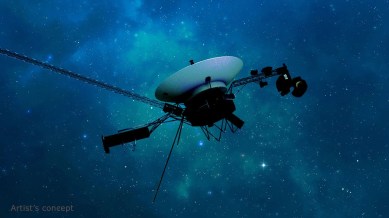Voyager 1, farthest spacecraft from Earth, sending ‘incoherent’ data back to NASA
NASA is concerned with Voyager 1, the first spacecraft to go into interstellar space, as it has been sending back "nonsense" since November.

NASA’s Voyager 1 is the most-distant man-made object in space and is more than 24 billion kilometres away from us. But the first spacecraft to cross into interstellar space is not doing well and its days seem numbered as it is sending back incoherent messages to mission controllers at the space agency.
“It basically stopped talking to us in a coherent manner,” said Suzanne Dodd of NASA’s Jet Propulsion Laboratory to NPR. Dodd has been the project manager for the Voyager interstellar mission since 2010.
The twin spacecraft made a string of discoveries on and around Jupiter and Saturn, like the intricacies of Saturn’s rings and the presence of active volcanoes on Jupiter’s moon Io. Voyager 2 went on to explore Uranus and Neptune and is still the only spacecraft to have visited those planets.
But Voyager 1 has not sent any coherent data to Earth since November, and the space agency is still working on what Dodd is calling the “most serious issue” that it has faced since she took over the job in 2010, according to The New York Times.
Apart from its scientific impact, Voyager 1 also clicked the famous “Pale Blue Dot” image of Earth, which Carl Sagan interpreted as a representation of how small humanity is in the grand scale of the cosmos.
“Look again at that dot. That’s here. That’s home. That’s us. On it everyone you love, everyone you know, everyone you ever heard of, every human being who ever was, lived out their lives. The aggregate of our joy and suffering, thousands of confident religions, ideologies, and economic doctrines, every hunter and forager, every hero and coward, every creator and destroyer of civilization, every king and peasant, every young couple in love, every mother and father, hopeful child, inventor and explorer, every teacher of morals, every corrupt politician, every “superstar,” every “supreme leader,” every saint and sinner in the history of our species lived there–on a mote of dust suspended in a sunbeam,” he wrote in his book Pale Blue Dot, published in 1990.